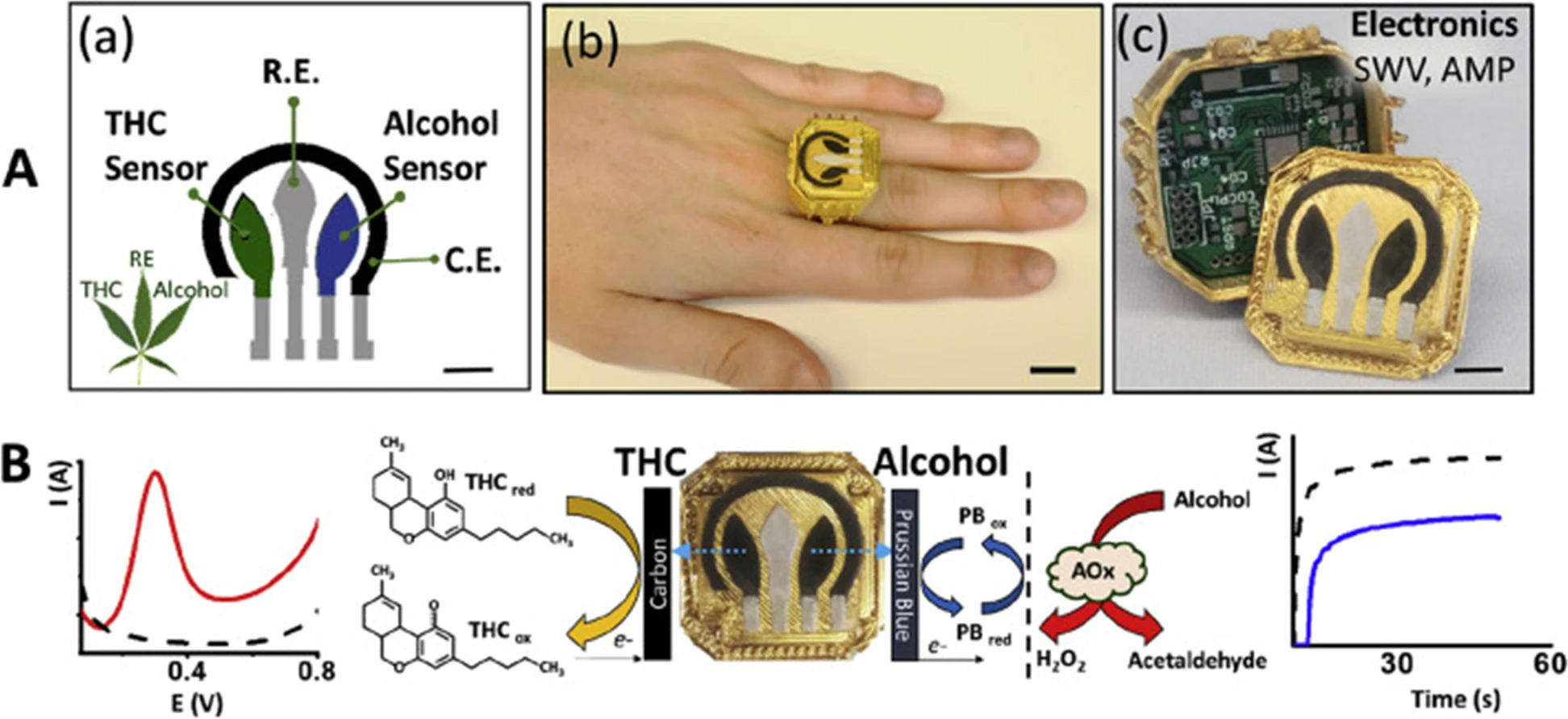Difference between revisions of "Template:Article of the month"
Shawndouglas (talk | contribs) |
Shawndouglas (talk | contribs) (Updated article of the month text.) |
||
| Line 1: | Line 1: | ||
<div style="float: left; margin: 0.5em 0.9em 0.4em 0em;">[[File: | <div style="float: left; margin: 0.5em 0.9em 0.4em 0em;">[[File:Fig5 Amini JofCannRes22 4.png|240px]]</div> | ||
'''"[[Journal: | '''"[[Journal:Recent advances in electrochemical sensor technologies for THC detection—A narrative review|Recent advances in electrochemical sensor technologies for THC detection—A narrative review]]"''' | ||
[[Tetrahydrocannabinol|Delta-9-tetrahydrocannabinol]] (Δ<sup>9</sup>-THC or simply THC) is the main [[Psychoactive drug|psychoactive component]] and one of the most important medicinal compounds in [[cannabis]]. Whether in human body fluids and breath or in [[laboratory]] and field samples, rapid and easy detection of THC is crucial. It provides insights into the impact of THC on the human organism, as well as its medicinal benefits. It also guides [[Cannabis cultivation|cannabis growers]] in determining different stages of the growth of the plant in the field, and eventually it helps scientists in the laboratory to assure the [[Quality control|quality]] of the products and determine their [[potency]] or better understand product development procedures ... ('''[[Journal:Recent advances in electrochemical sensor technologies for THC detection—A narrative review|Full article...]]''')<br /> | |||
<br /> | <br /> | ||
''Recently featured'': | ''Recently featured'': | ||
: ▪ [[Journal:Simultaneous quantification of 17 cannabinoids in cannabis inflorescence by liquid chromatography–mass spectrometry|Simultaneous quantification of 17 cannabinoids in cannabis inflorescence by liquid chromatography–mass spectrometry]] | |||
: ▪ [[Journal:Potential of NIRS technology for the determination of cannabinoid content in industrial hemp (Cannabis sativa L.)|Potential of NIRS technology for the determination of cannabinoid content in industrial hemp (Cannabis sativa L.)]] | : ▪ [[Journal:Potential of NIRS technology for the determination of cannabinoid content in industrial hemp (Cannabis sativa L.)|Potential of NIRS technology for the determination of cannabinoid content in industrial hemp (Cannabis sativa L.)]] | ||
: ▪ [[Journal:Cannabis sativa research trends, challenges, and new-age perspectives|Cannabis sativa research trends, challenges, and new-age perspectives]] | : ▪ [[Journal:Cannabis sativa research trends, challenges, and new-age perspectives|Cannabis sativa research trends, challenges, and new-age perspectives]] | ||
Revision as of 18:00, 1 August 2022
"Recent advances in electrochemical sensor technologies for THC detection—A narrative review"
Delta-9-tetrahydrocannabinol (Δ9-THC or simply THC) is the main psychoactive component and one of the most important medicinal compounds in cannabis. Whether in human body fluids and breath or in laboratory and field samples, rapid and easy detection of THC is crucial. It provides insights into the impact of THC on the human organism, as well as its medicinal benefits. It also guides cannabis growers in determining different stages of the growth of the plant in the field, and eventually it helps scientists in the laboratory to assure the quality of the products and determine their potency or better understand product development procedures ... (Full article...)
Recently featured:
- ▪ Simultaneous quantification of 17 cannabinoids in cannabis inflorescence by liquid chromatography–mass spectrometry
- ▪ Potential of NIRS technology for the determination of cannabinoid content in industrial hemp (Cannabis sativa L.)
- ▪ Cannabis sativa research trends, challenges, and new-age perspectives
